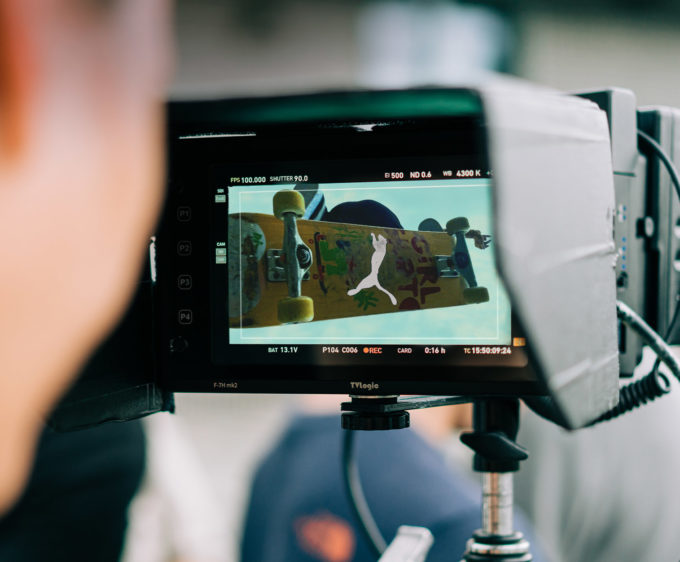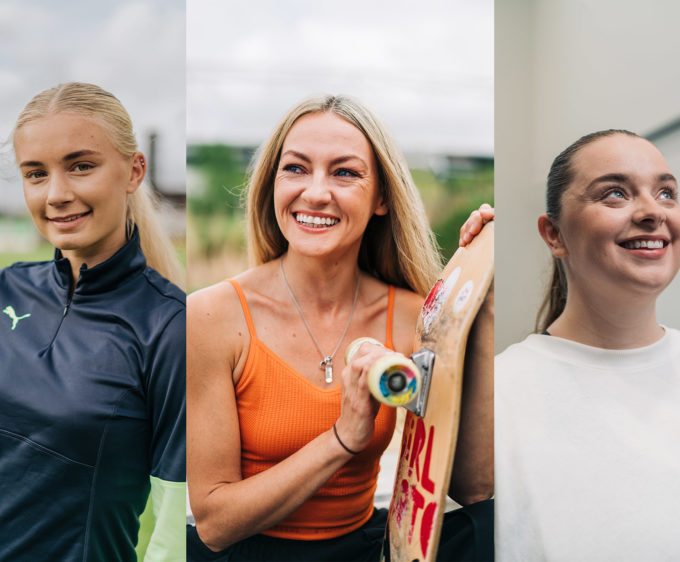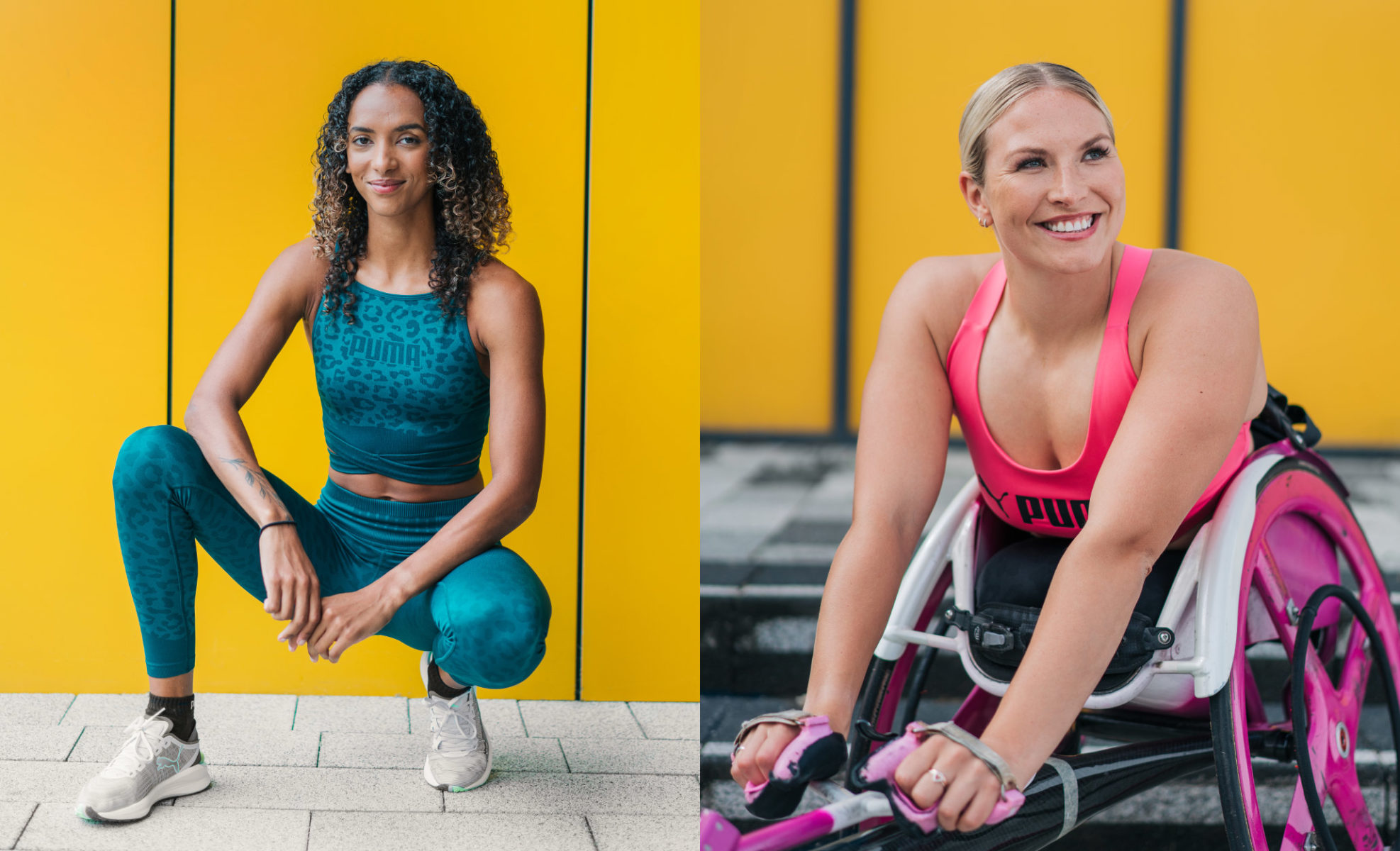
Let’s Move Together
Are you a doomscroller or joyscroller? Athletes Lina Nielsen and Samantha Kinghorn talk about the effects of mobile phones and social media – and how their lives have been energised by movement
By Tomi Otekunrin
Photography by Claudia Agati
When British 400m hurdler and yoga teacher Lina Nielsen needs a break from being on her phone, she likes to head out on a walk with her dog or go to her yoga mat and work through various poses. As long as she’s moving, she’s happy. Like most of us, Lina is guilty of passively scrolling on social media but when she’s competing on the world stage, she prefers to avoid it completely. “Athletes don’t like being on social media because seeing all the results and what people have to say can be overwhelming,” she says.
Training hard is nothing new to Scottish wheelchair racer and twice Paralympic medallist Samantha Kinghorn. Her extreme discipline has allowed her to compete and win at the highest level. However, when she’s in between training sessions, she too can find it difficult to resist the pull of social media. “I’ve got time in the day where I’m meant to be recovering and I’ll be sitting, scrolling on my phone and looking at stuff,” Samantha says. “One day I thought to myself, this isn’t really me recovering. So I thought, right, I need to do something. I need to get myself off my phone.”

Weaning herself off the phone is conducive to Samantha’s recovery, and for Lina, it allows her to focus solely on competing. But both know that for a majority of us, reducing screen time is easier said than done. Both athletes have teamed up to launch the PUMA300 campaign to encourage all women and girls to get off their phones and mentally rejuvenate themselves with 300 moves linked to their passions.
The campaign is inspired by a report from Statista that reveals the average person in the UK scrolls over 300 metres on their phone every day. That means your thumb is participating in a 300m sprint daily. Spending that much time on your device can have a negative effect on mental and physical health. However, it only takes a short burst of movement to boost a positive mood and improve overall wellbeing. Lina’s relaxing 300 seconds of yoga and Samantha’s impressive 300 push strokes will definitely inspire you to move. But the stories of their journeys to get to where they’re at today will encourage you to keep going when you want to give up.
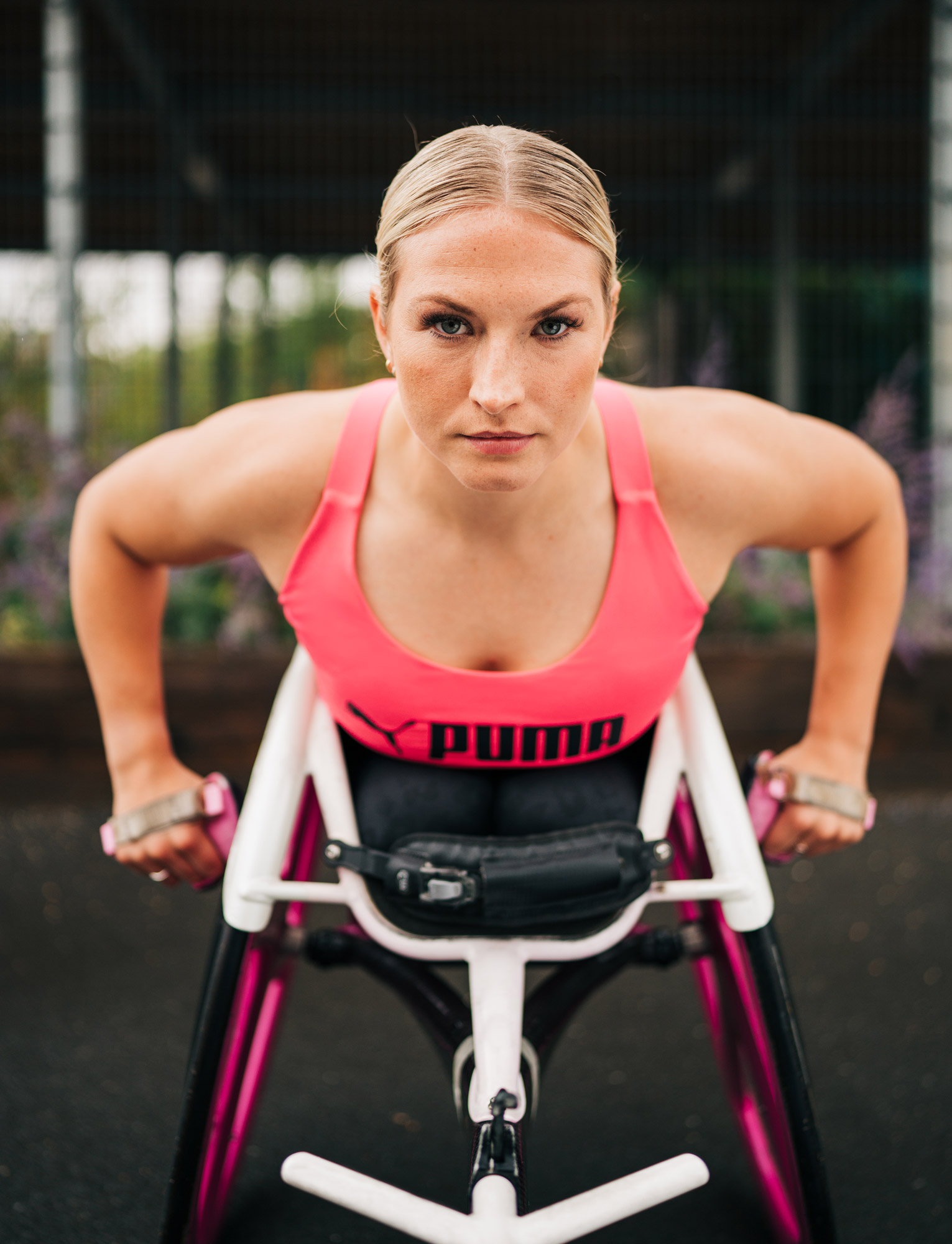
Samantha didn’t consider herself particularly sporty growing up but she was an active child and enjoyed being outdoors in her Scottish Borders home town. One day in 2010, she was playing on her family’s farm like any other regular day, before being accidentally crushed by a forklift. The injury left her paralysed from the waist down and she spent six months in hospital, adapting to her new life.
While she was being treated in the spinal injuries unit, she went to the WheelPower Inter Spinal Unit Games – an annual competition for spinal patients to try a variety of wheelchair sports. When Samantha first arrived at the competition she was immediately awestruck by how sports could be adapted for wheelchair users. “I’d never seen anything like that in my life,” she says. The Games opened her eyes to a whole new world and gave her hope for the first time in months. “When I first had my accident. I genuinely thought that I was going to be stuck in bed forever.”
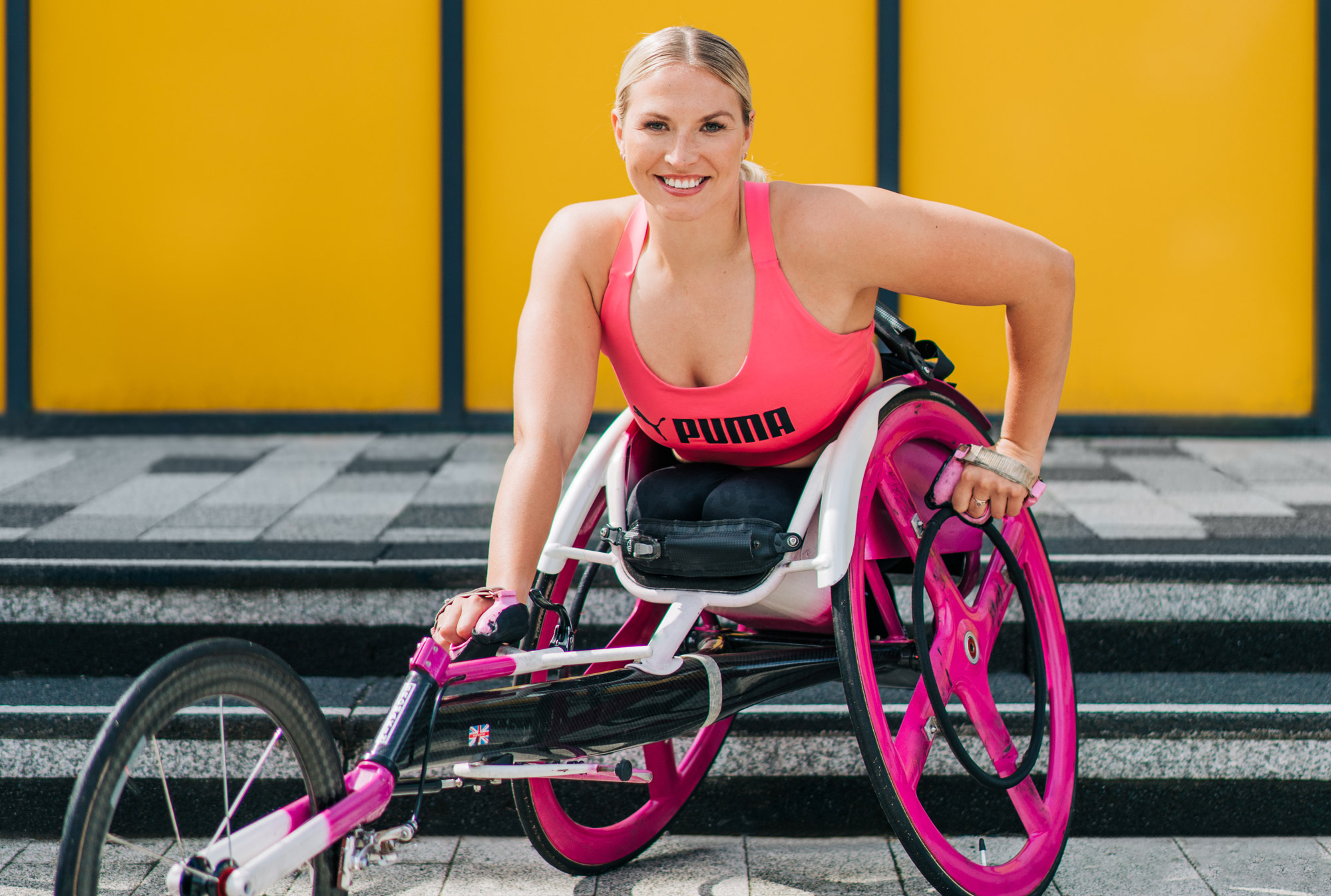
She was determined to have a go at everything – and she did try out every sport. On the last day of competition, Samantha went down to the track to try out for athletics. When she got there, she saw a girl in her racing chair going down the track and she was left speechless. “The girl looked cool, her racing chair looked cool. The chair was silver with white stars,” Samantha says. “She really trained hard and looked fit and muscular.” After seeing what she deemed the coolest girl ever at the time, Samantha knew she wanted to be a wheelchair racer as well.
Soon after the encounter, she let her parents know that she wanted to compete so they put together a fundraiser to get a racing chair and Samantha got her first one in 2012. In the same year, she competed in her first race at the London Mini Marathon and came second. Since then she has won medals in world championships, bagged bronze in the 100m and silver in the 400m at the 2020 Summer Paralympics and holds the record of the fastest ever female British wheelchair racer over 100m, 200m, 400m and 800m. All it took was Samantha seeing one girl move in a way that she thought was no longer possible, to propel her into the celebrated athlete that she is today.
For Lina, it was legendary middle distance athlete Dame Kelly Holmes who inspired her to move. When she first got into track and field, she immediately tried for the 800m and discovered it wasn’t the right sport for her. “I quickly realised that I don’t have any endurance genes in my body,” she says with a laugh. “I went down to 400m and then I just got really bored.” After coming back from the 2015 European Athletics Junior Championships, she told her coach she wanted to give hurdling a go and went to an open meet where she ranked first in the UK for the 400m hurdles. “I thought, yeah, this event might be for me. It took me about two or three years to finally get the courage to train for it,” she says. “But now that I run it, I just wouldn’t change my event. It’s what I’m destined for.” Lina is flying high being ranked top 15 in the world for 400m hurdles.

Lina has experienced the highest of highs and some crushing lows with her athletic career so far. After recording a personal best at the 2022 Golden Gala Pietro Mennea and winning a silver medal at the 2022 Müller UK Athletics Championships, Lina was ready to take on her first World Athletics Championships. The night before her first race at the championships, Lina experienced her first multiple sclerosis flare up in years. She recently revealed that she has had the chronic condition since she was 13 and was officially diagnosed with Relapsing Remitting MS at 17. By the time of the race, the 400m hurdler’s left arm and leg felt numb and she was also experiencing right-sided weakness. Lina still went out there and gave it her all. She finished last, but she still finished.
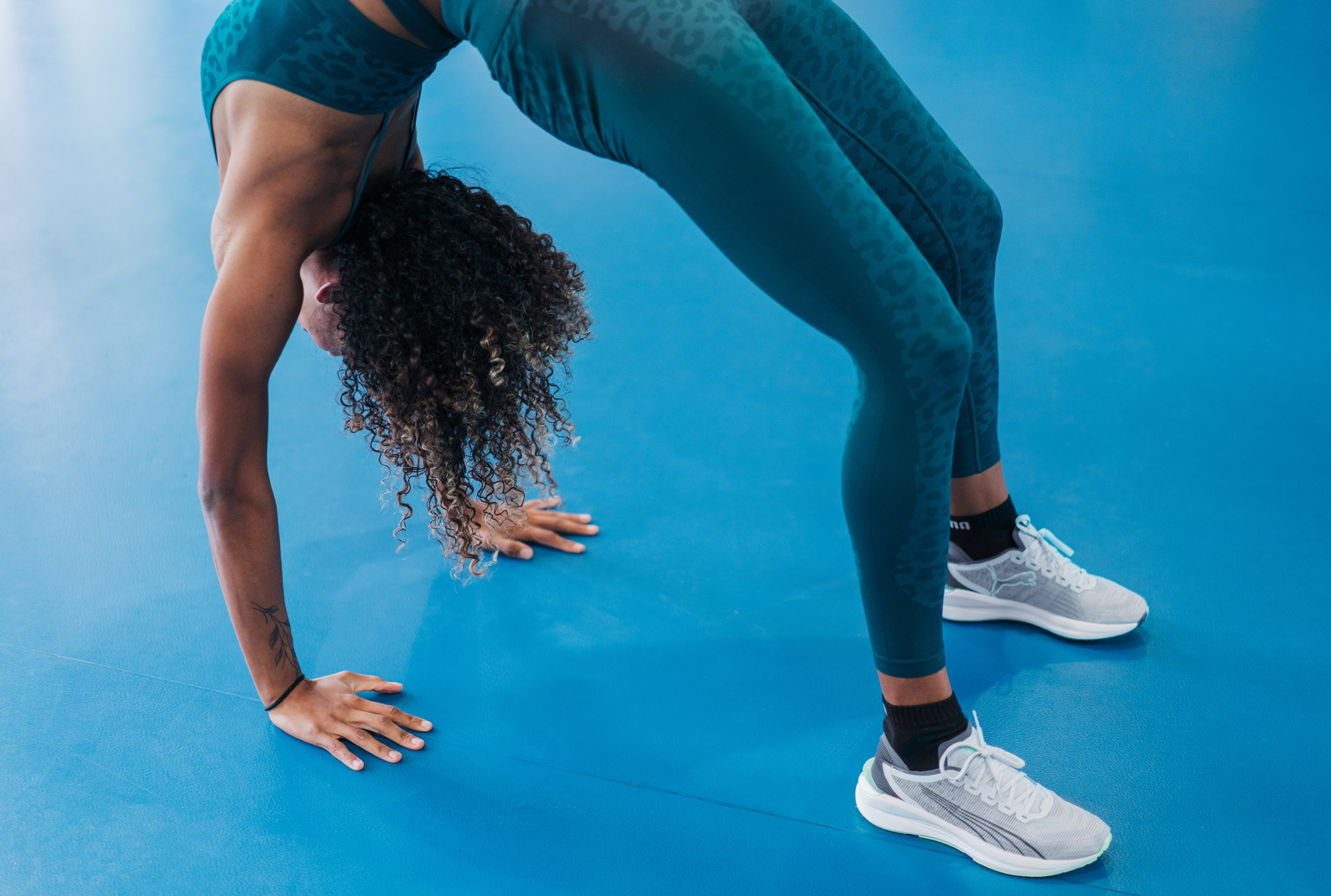
movement
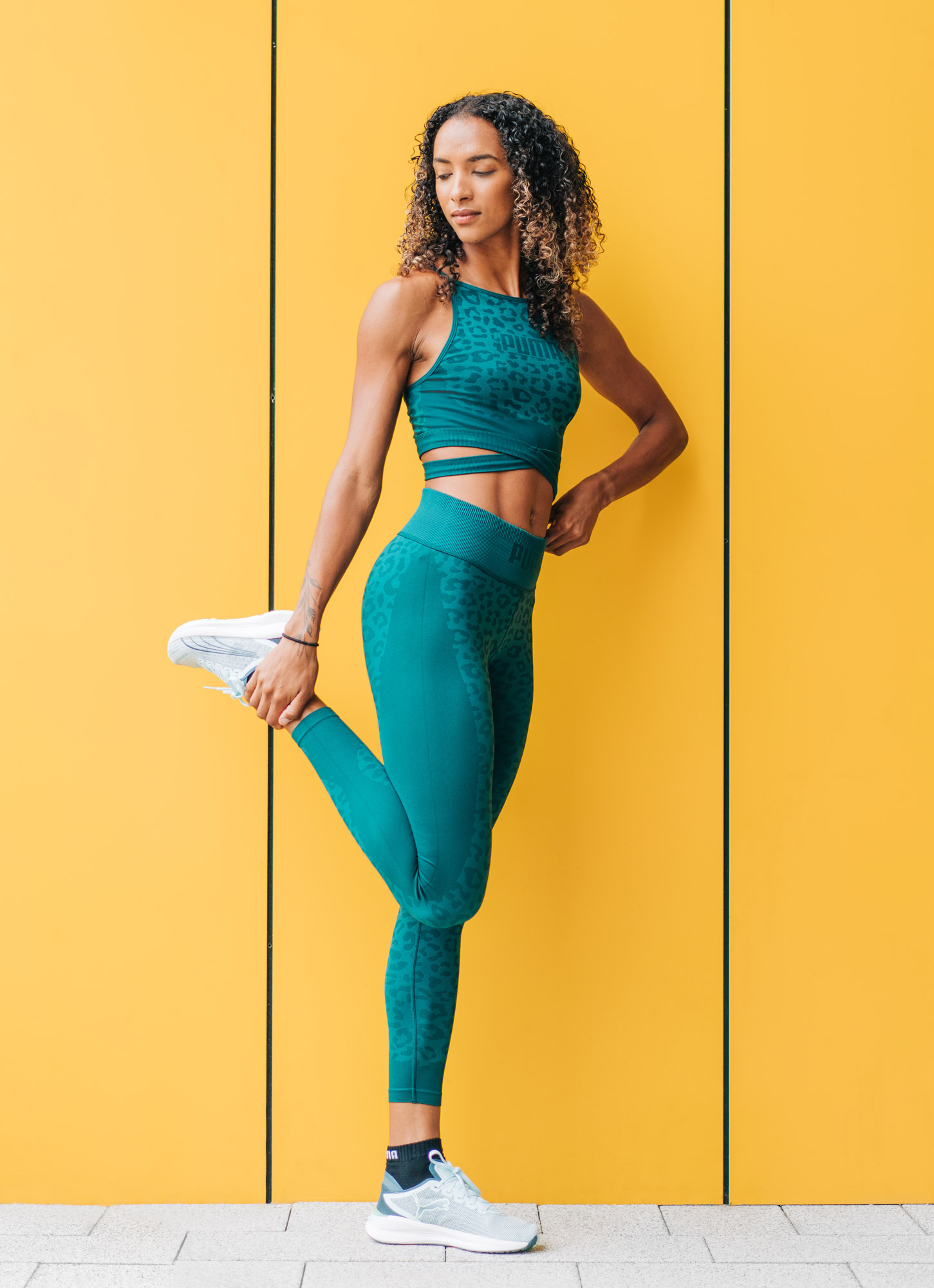
Competing in the 2023 World Athletics Championships and qualifying for the 2024 Summer Olympics are top of Lina’s to-do list but she also has another love that occupies her time and that is yoga. An injury that occurred in 2017, meant she couldn’t run or do weightlifting – activities that she was accustomed to. “I had to find other ways to move, so someone told me to go to a yoga class,” she says. “I hated my first class, it just wasn’t enjoyable. Everyone seemed to know the names of the poses while I had no clue.” Once she got the hang of the poses and realised the physical benefits, Lina became obsessed with yoga and is now a qualified teacher.
Yoga is all about the power of movement – that’s how Lina feels about it. That’s why she decided to be a part of the PUMA 300 campaign, as it’s all about moving. “It’s exactly who I am. My brand is just movement, movement, movement,” she adds. Samantha echoes the same thoughts. “I think it wasn’t until my accident that I understood the power of sport, both mentally and physically,” she says. “When I started playing sport, I met people and started socialising. It’s not just about getting fit, it’s also for your mental benefit.” So whether it’s spending quality time out in nature or practising the downward dog in your living room, it’s time to find what moves you.
Photography By Claudia Agati, Editorial Design by Root
